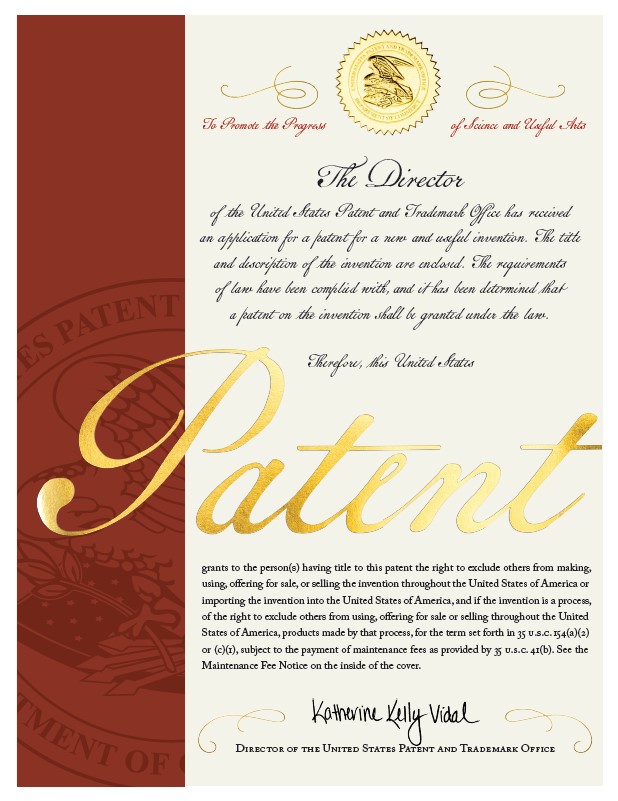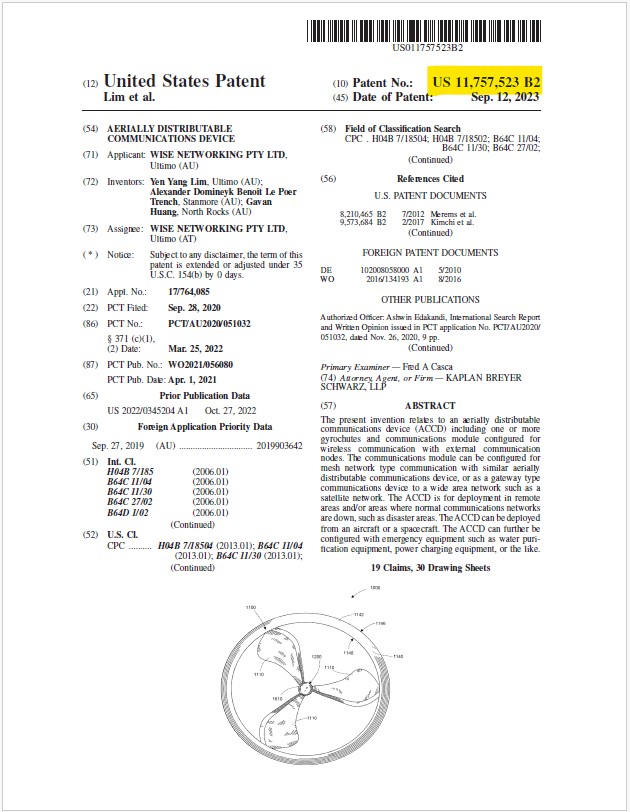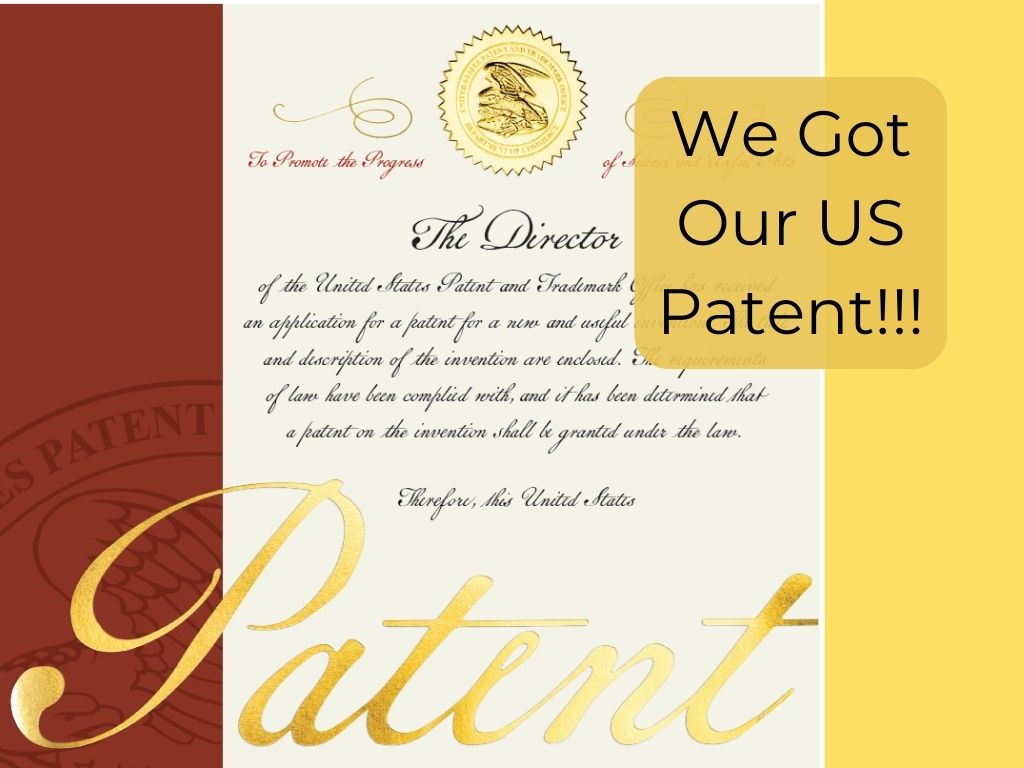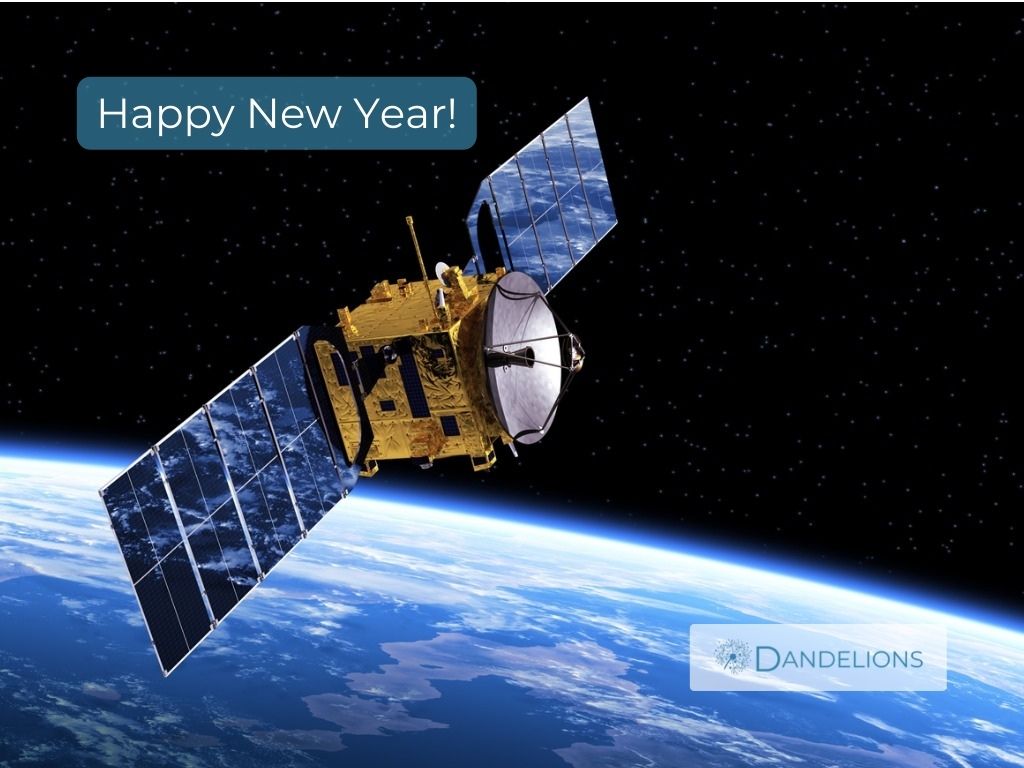This is an announcement which has been a long time coming, and we are very proud of it! We won a US Patent for our Gyrochute! US Patent US 11,757,523 B2!!
Okay - first, the elevator pitch!
Elevator Pitch
In today's fast-paced world, communication is not just a convenience; it's a lifeline. Imagine a device that can provide instant connectivity even in the most remote or disaster-stricken areas, bridging the gap when traditional communication networks fail. This is where the Aerially Distributable Communications Device (ACCD) comes into play.
That is what we call the Gyrochute when used in mesh or swarm configuration, which is the innovation description for which we have received our patent.
In this blog post, we will explore the groundbreaking features and applications of the ACCD, which has recently been awarded a patent for its game-changing potential. Gyrochutes in mesh networks coupled with emergency equipment, the ACCD is set to redefine the way we think about communication in the modern age.
What Does The Patent Look Like!

Okay - so that looks really cool. But this is the first page, which makes it a little bit clearer.

The Abstract
Instead of talking through our various use cases, let's look at the abstract of our patent.
It says, "The present invention relates to an aerially distributable communications device (ACCD) including one or more gyrochutes and communications module configured for wireless communication with external communication nodes.
The communications module can be configured for mesh network type communication with similar aerially distributable communications device, or as a gateway-type communications device to a wide area network such as a satellite network.
The ACCD is for deployment in remote areas and/or areas where normal communications networks are down, such as disaster areas. The ACCD can be deployed from an aircraft or a spacecraft.
The ACCD can further be configured with emergency equipment such as water purification equipment, power charging equipment, or the like."
Summary
We've left out a lot of the work that goes into getting a US patent as we have other applications in train.
If you are reading this thinking about filing your own hardware patent, you should be aware that there is a long, complex, and expensive process involved.
You should absolutely get professional advice and have a proper strategy to get your international patents.
But if you are keen on getting some ideas, or your use case is in aero or space missions, feel free to reach out and say hello!


